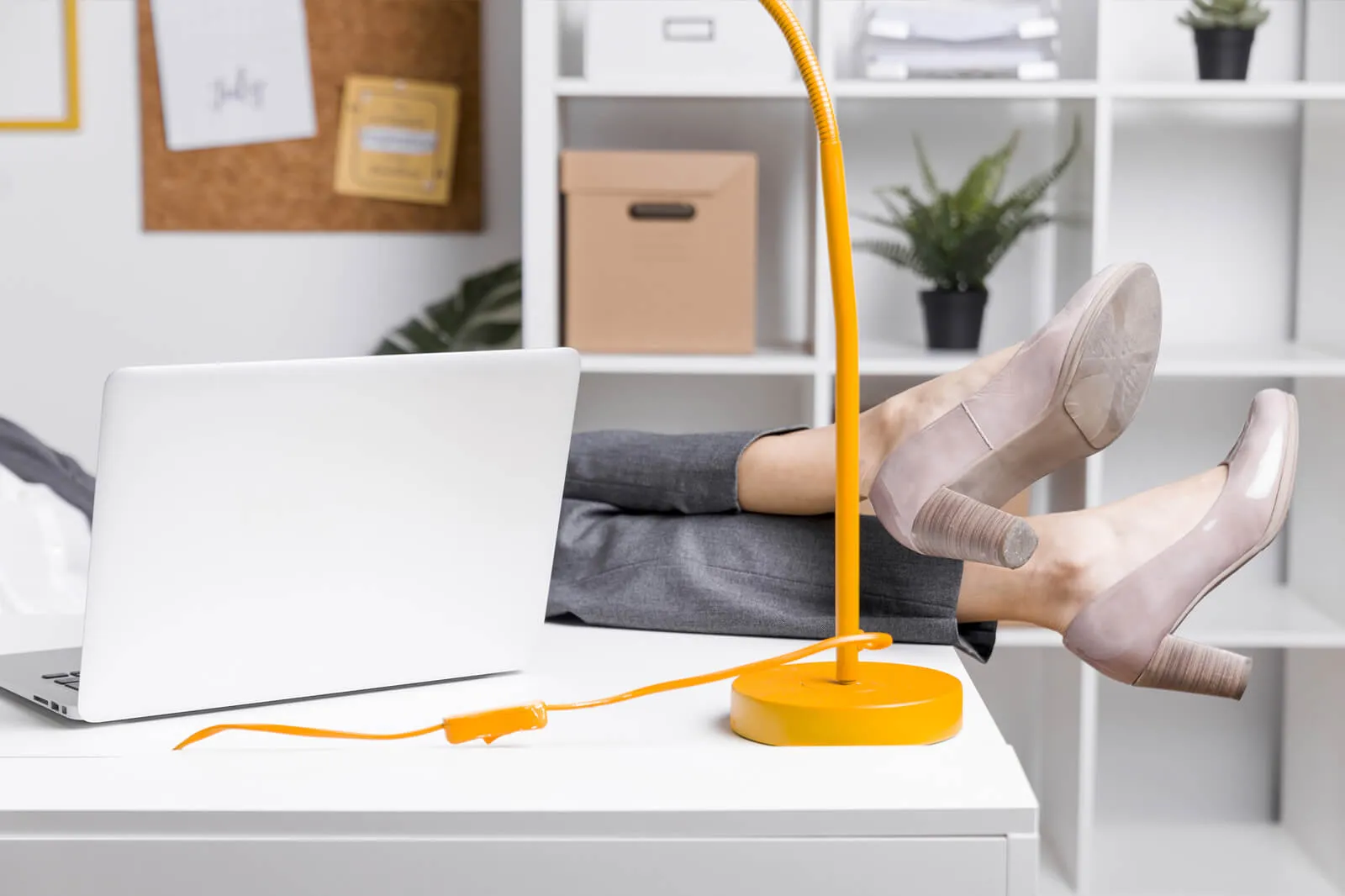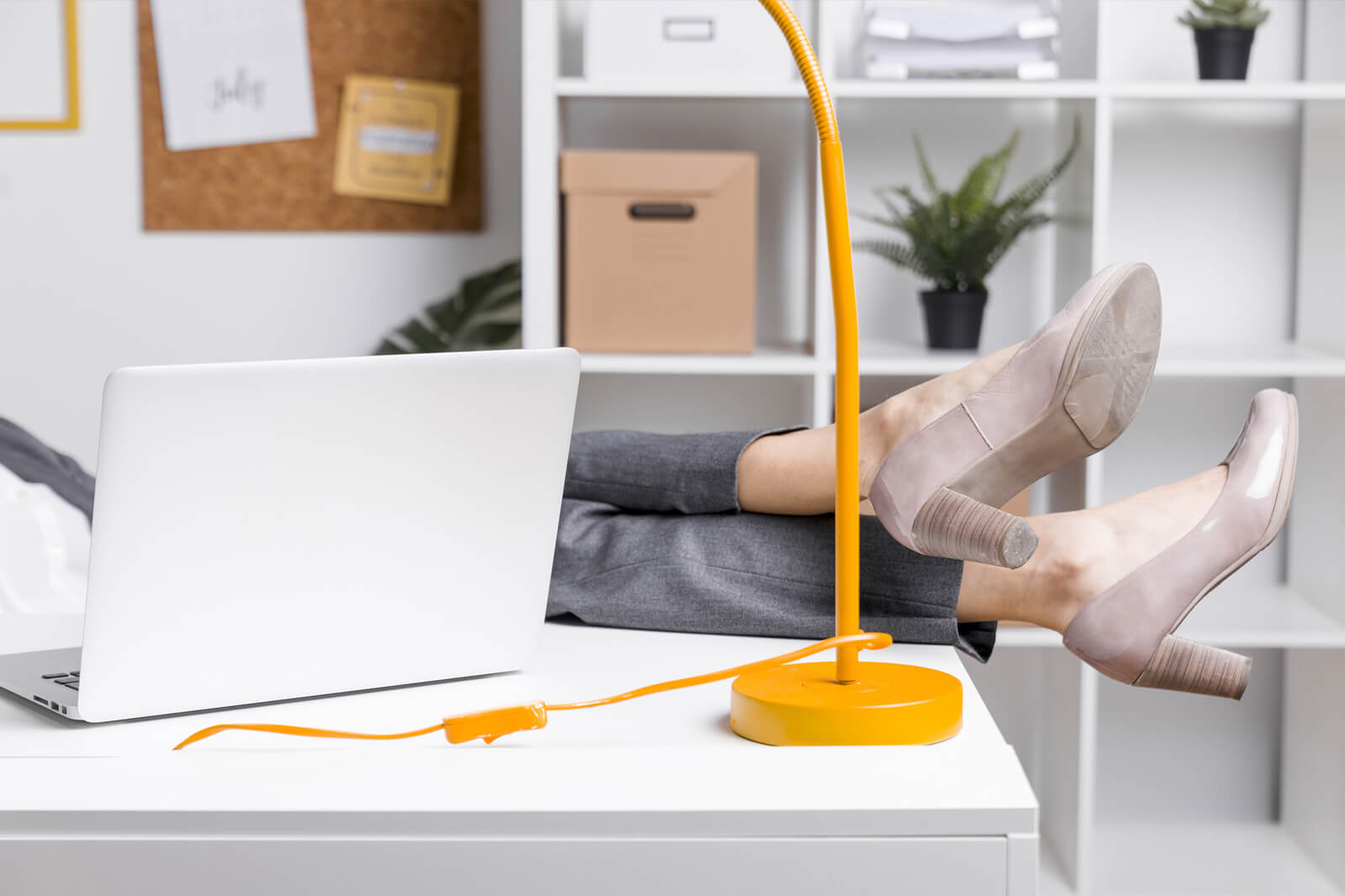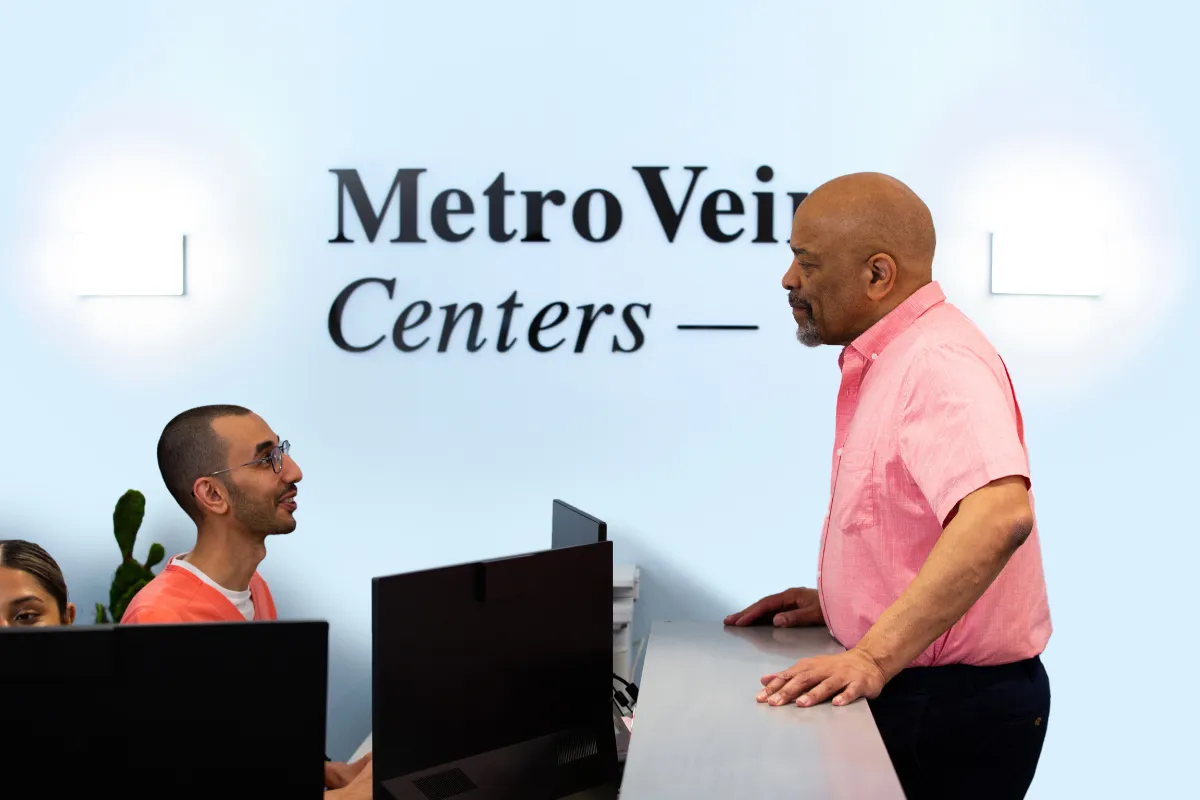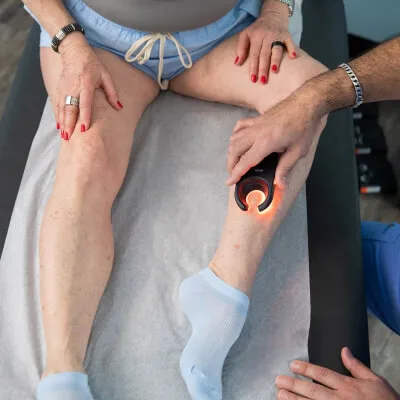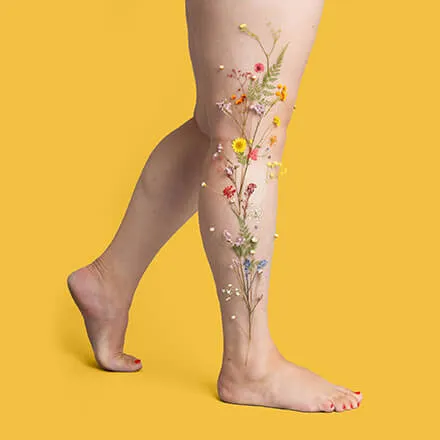If your job requires you to sit or stand for extended periods, you're probably all too familiar with the leg and back pain that follows. Additionally, prolonged sitting or standing can increase your risk of developing leg vein issues. The good news is that there are proactive steps you can take to optimize workplace ergonomics, minimizing your discomfort and reducing these risks.
Optimal Sitting Posture for Vein Health
As jobs become increasingly sedentary, people spend more time sitting and less time moving around. Many people work from home and overlook the importance of an ergonomic work setup and optimal sitting posture.
Unfortunately, sitting for long periods reduces muscle movement and blood flow, leading to a stiff neck and back. It also adds pressure to the legs, increasing strain on the leg veins. Standard chairs often contribute to posture-related issues, so finding the right chair is essential.
Chair Selection and Adjustment
Choosing the right chair can boost your comfort and posture. It also helps with leg vein health and circulation, especially in more sedentary jobs. Standard office chairs can be hard, creating pressure on your back and legs and causing chronic pain and increased vein pressure.
Ergonomic chairs with footrests offer a better option. They allow you to elevate your legs, which reduces pressure caused by sitting too long and decreases your risk of developing varicose veins and blood clots.
When it comes to office chair ergonomics, height and depth are of the utmost importance. The seat's depth should allow for one to two inches of space between your knees and the front edge. The height must be adjustable between 16 and 21 inches above the ground.
Desk Setup
The height of your desk should provide adequate space between your knees and its underside. You should be able to sit comfortably with your legs at a 90° angle, ensuring your feet rest easily on the floor or a leg rest.
The best desk height is 25 to 27.5 inches, though you may use an online calculator to make an accurate measurement.
Standing Desk Considerations
Standing desks are an excellent option for people who prefer to stand instead of sit in their workspace. Adaptive workplaces use standup desks in employee wellness programs and to accommodate individuals with disabilities. They're also a welcome change for people who are more productive when alternating between sitting and standing.
Benefits of Standing Desks
Some research supports the use of standup desks to increase productivity. The reason behind this increase isn't well understood, though some theories suggest it could be linked to a lower incidence of back pain and pressure. However, these aren't the only benefits of using a standup desk.
Additional standing desk benefits may include:
- reducing pressure on your leg veins
- improve circulation
- strengthen calf muscles
- relieving tired, achy legs
Proper Standing Posture
To maximize the benefits of a standup desk, remember to stand with good posture. Standing at an angle can cause neck, back, or shoulder pain and may add additional strain on your legs. Researchers at Harvard suggest standing straight, which distributes weight equally on both legs and feet.
It's important to note that standing flat on the ground for a prolonged time may contribute to foot and leg pain. Ergonomic accessories such as an anti-fatigue mat can create a buffer between your feet and the ground improving your posture and reducing pain.
Movement and Breaks
Studies show that regular breaks increase productivity and boost job satisfaction. Additionally, they allow for movement, which increases blood flow to the legs, reducing complications like varicose veins.
Importance of Regular Movement
If you're working long hours, it may benefit you to engage in regular stretch breaks and movement. Stretching or walking in place every 30 to 60 minutes can provide you with lasting benefits like:
- reduced risk of cancer
- reduce the risk of heart disease
- boost mental clarity
- improved circulation
- lower risk of developing diabetes
Desk Exercises for Vein Health
You don't have to hit the gym or your workplace fitness center to gain benefits from regular movement. There are several exercises you could do right from your desk.
They include:
- Ankle pumps
- Calf raises
- Leg extensions
- Knee lifts
Footwear and Leg Support
Footwear is an important component of work productivity. Comfortable, snug shoes offer leg support and reduce pressure on foot arches, improving circulation, posture, and, more importantly, comfort.
Choosing the Right Shoes
When it comes to ergonomic footwear, prioritize comfort over appearance. High heels, tight sneakers, and flip-flops can lead to foot pain and issues with leg veins over time. Opt for lightweight shoes that fit snugly and offer ample arch support to reduce these risks and improve your posture.
Compression Stockings
Many people work in sedentary "desk" jobs, which can limit their movement throughout the day. This lack of activity can lead to leg swelling ( edema ), leg pain, and an increased risk of deep vein blood clots. Compression stockings can help mitigate these risks by applying pressure to the leg muscles and supporting the deeper veins in the legs.
Hydration and Nutrition at Work
Staying hydrated throughout the day is so important to your overall health and well-being. Dehydration can lead to feelings of fatigue, irritability, and stress. It is also the precursor to many leg vein issues. So, every time you walk by the workplace cooler, or take a stretch break if you work from home, remember to refill a reusable water bottle.
Importance of Staying Hydrated
Staying hydrated during the workday is crucial for maintaining your health. Adequate fluid intake helps transport vital nutrients through your bloodstream. It also keeps your blood thinner, facilitating better circulation in your leg veins.
Healthy Snacking for Vein Health
Snacking on chips from the vending machine or kitchen may be tempting, but this does more harm than good. Highly processed foods such as chips contain large amounts of sodium and sugar. Highly processed foods can lead to problems with circulation, resulting in plaque buildup and high venous pressure.
Instead, choose foods that are high in nutrients and antioxidants, such as:
- Fruit salad
- Grilled chicken salad
- Celery and carrots with almond peanut butter
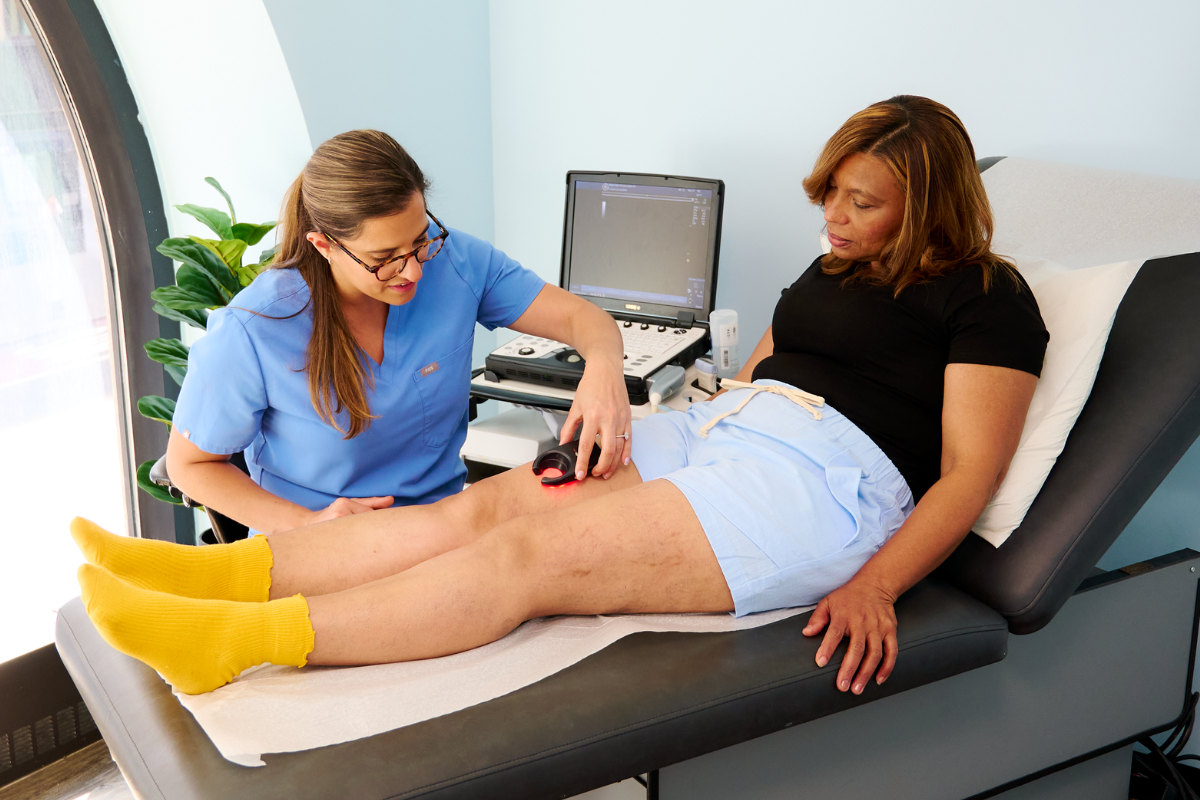
Prioritizing Vein Health in the Workplace
You don't have to wait until you get home to pamper yourself; you deserve comfort throughout the day. By gradually implementing the changes mentioned above, you can enhance your productivity, work performance, overall comfort, and leg vein health.
Do you want to learn more ways to feel your best during the workday? Schedule a free consultation with our vein specialists. During your first appointment, you'll discuss your medical history and current symptoms, undergo a physical examination of your legs and problem veins, and receive recommendations for the best treatment options.

Dr. Philip LoPresti
Meet Dr. Philip LoPresti DO, DABVLM, FACS, a board-certified vein specialist and surgeon with over 20 years of experience. Schedule an appointment with him in Queens, NY today.
Meet Dr. Philip LoPresti
Trusted insight from the nationally accredited, board-certified vein doctors at Metro Vein Centers.


